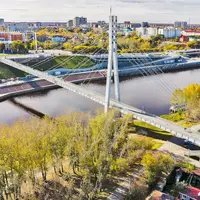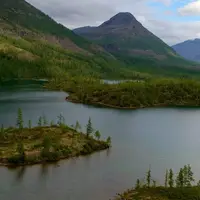Experience
Technologies
Resources
- Time processing
The availability of a high-resolution seismic image of the environment in many respects predetermines the efficiency of solving geological problems. The PetroTrace team applies the most advanced technologies and software from the world's leading manufacturers as well as its own unique methods for 2D/3D/4D/4C seismic data processing.
- Depth processing
In areas with sharp vertical and lateral velocity changes, the temporal migration of seismic data does not allow obtaining a correct image of the environment. To improve reflection focus and restore true horizon geometry, PetroTrace specialists build depth-velocity models of any degree of complexity and use a wide range of pre-stack depth migration algorithms.
- Structural interpretation
The structural interpretation of seismic data allows to trace acoustically contrasting geological boundaries and tectonic faults in the seismic wave field. The interpretation reconstructs the morphology and depth of target reservoir boundaries and provides a structural basis for creating volumetric geologic models of deposits and prospects.
- Reservoir properties prediction
Reliable information about structural plan and reservoir properties is a prerequisite for drilling planning and reserves estimation. The many years of experience of PetroTrace employees in various oil and gas provinces enables effective integration, analysis and interpretation of all available geological and geophysical information in the region under study.
- Geological modeling
Computer geological models describe the initial state of a deposit from the structural framework and faults to the spatial distribution of lithological rock types, FCP and initial saturation. PetroTrace specialists create geological models based on all available geological and geophysical information, including the results of seismic and GIS data interpretation, core studies, sedimentological analysis and development data.
- Geomechanical modeling
Geomechanical models represent the current stress-strain state of rocks in the interval from the day surface to the target pay zones.Geomechanical models use seismic survey data, geological models, GIS data, results of special core analysis and drilling data to create them.
- Flow modeling
Three-dimensional hydrodynamic models of oil, gas and gas condensate fields reproduce the dynamics of hydrocarbon and displacement agent filtration in the reservoir. Integrated modeling technology also takes into account processes in wells, surface pipelines and water pipelines.
- Well planning and drilling support
Optimization of well design, location and modes of operation on computer models helps improve economic efficiency and reduce risks in production and exploration drilling. Comprehensive geologic support technologies help significantly increase the success of horizontal drilling under uncertainty.
- Integrated projects
Combining several areas of work for one field in an integrated project not only reduces the time and improves the quality of results, but also opens up the possibility to fully evaluate the complex of inherent uncertainties of the field and optimize its development or modernization.




